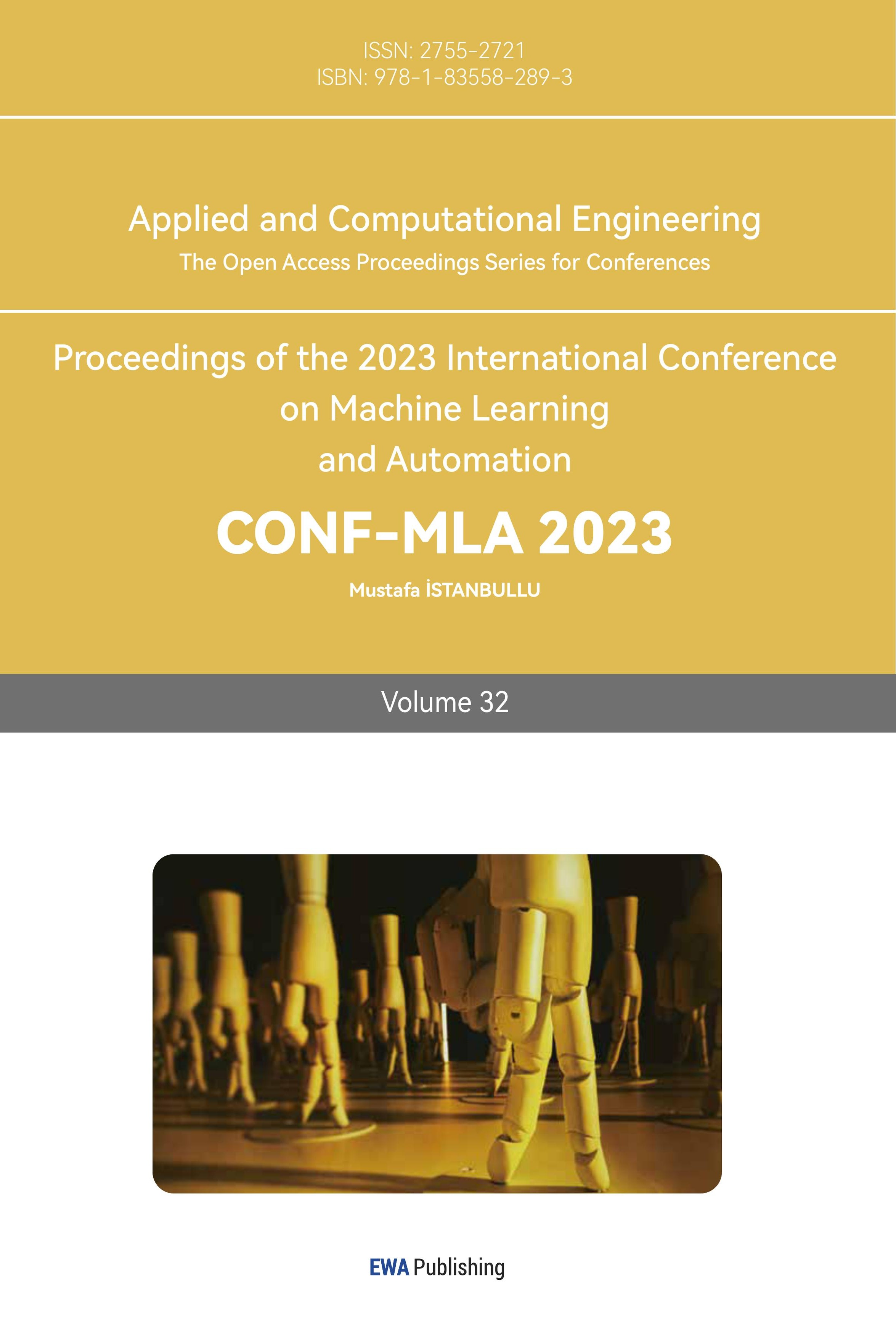References
[1]. Xiong L, Han X, Zhong X, et al. RSIS: A secure and reliable secret image sharing system based on extended Hamming codes in industrial Internet of Things[J]. IEEE Internet of Things Journal, 2021, 10(3): 1933-1945.
[2]. Isakov D A, Sokolov A V. McELIECE CRYPTOSYSTEM BASED ON QUATERNARY HAMMING CODES[J]. Informatics & Mathematical Methods in Simulation, 2022, 12(4).
[3]. Torres-Alvarado A, Morales-Rosales L A, Algredo-Badillo I, et al. An SHA-3 Hardware Architecture against Failures Based on Hamming Codes and Triple Modular Redundancy[J]. Sensors, 2022, 22(8): 2985.
[4]. He Y, Xiao C, Wang S, et al. Smart all-time vision: The battery-free video communication for urban administration and law enforcement[J]. Digital Communications and Networks, 2023.
[5]. Cintas-Canto A, Kermani M M, Azarderakhsh R. Error Detection Constructions for ITA Finite Field Inversions Over on FPGA Using CRC and Hamming Codes[J]. IEEE Transactions on Reliability, 2022.
[6]. Septien-Hernandez J A, Arellano-Vazquez M, Contreras-Cruz M A, et al. A Comparative study of post-quantum cryptosystems for Internet-of-Things applications[J]. Sensors, 2022, 22(2): 489.
[7]. Al Homssi B, Dakic K, Maselli S, et al. IoT network design using open-source LoRa coverage emulator[J]. IEEE access, 2021, 9: 53636-53646.
[8]. Nguyen C D, Nguyen P D, Nguyen A T, et al. Performance Evaluation Of Neural Network-Based Channel Detection For STT-MRAM[C]//2021 8th NAFOSTED Conference on Information and Computer Science (NICS). IEEE, 2021: 430-434.
[9]. Nguyen T A, Lee J. Improving Bit-Error-Rate Performance Using Modulation Coding Techniques for Spin-Torque Transfer Magnetic Random Access Memory[J]. IEEE Access, 2023, 11: 33005-33013.
[10]. Larue G, Dufrene L A, Lampin Q, et al. Neural Belief Propagation Auto-Encoder for Linear Block Code Design[J]. IEEE Transactions on Communications, 2022, 70(11): 7250-7264.
Cite this article
Shen,L. (2024). Exploring the application and performance of extended hamming code in IoT devices. Applied and Computational Engineering,32,71-76.
Data availability
The datasets used and/or analyzed during the current study will be available from the authors upon reasonable request.
Disclaimer/Publisher's Note
The statements, opinions and data contained in all publications are solely those of the individual author(s) and contributor(s) and not of EWA Publishing and/or the editor(s). EWA Publishing and/or the editor(s) disclaim responsibility for any injury to people or property resulting from any ideas, methods, instructions or products referred to in the content.
About volume
Volume title: Proceedings of the 2023 International Conference on Machine Learning and Automation
© 2024 by the author(s). Licensee EWA Publishing, Oxford, UK. This article is an open access article distributed under the terms and
conditions of the Creative Commons Attribution (CC BY) license. Authors who
publish this series agree to the following terms:
1. Authors retain copyright and grant the series right of first publication with the work simultaneously licensed under a Creative Commons
Attribution License that allows others to share the work with an acknowledgment of the work's authorship and initial publication in this
series.
2. Authors are able to enter into separate, additional contractual arrangements for the non-exclusive distribution of the series's published
version of the work (e.g., post it to an institutional repository or publish it in a book), with an acknowledgment of its initial
publication in this series.
3. Authors are permitted and encouraged to post their work online (e.g., in institutional repositories or on their website) prior to and
during the submission process, as it can lead to productive exchanges, as well as earlier and greater citation of published work (See
Open access policy for details).
References
[1]. Xiong L, Han X, Zhong X, et al. RSIS: A secure and reliable secret image sharing system based on extended Hamming codes in industrial Internet of Things[J]. IEEE Internet of Things Journal, 2021, 10(3): 1933-1945.
[2]. Isakov D A, Sokolov A V. McELIECE CRYPTOSYSTEM BASED ON QUATERNARY HAMMING CODES[J]. Informatics & Mathematical Methods in Simulation, 2022, 12(4).
[3]. Torres-Alvarado A, Morales-Rosales L A, Algredo-Badillo I, et al. An SHA-3 Hardware Architecture against Failures Based on Hamming Codes and Triple Modular Redundancy[J]. Sensors, 2022, 22(8): 2985.
[4]. He Y, Xiao C, Wang S, et al. Smart all-time vision: The battery-free video communication for urban administration and law enforcement[J]. Digital Communications and Networks, 2023.
[5]. Cintas-Canto A, Kermani M M, Azarderakhsh R. Error Detection Constructions for ITA Finite Field Inversions Over on FPGA Using CRC and Hamming Codes[J]. IEEE Transactions on Reliability, 2022.
[6]. Septien-Hernandez J A, Arellano-Vazquez M, Contreras-Cruz M A, et al. A Comparative study of post-quantum cryptosystems for Internet-of-Things applications[J]. Sensors, 2022, 22(2): 489.
[7]. Al Homssi B, Dakic K, Maselli S, et al. IoT network design using open-source LoRa coverage emulator[J]. IEEE access, 2021, 9: 53636-53646.
[8]. Nguyen C D, Nguyen P D, Nguyen A T, et al. Performance Evaluation Of Neural Network-Based Channel Detection For STT-MRAM[C]//2021 8th NAFOSTED Conference on Information and Computer Science (NICS). IEEE, 2021: 430-434.
[9]. Nguyen T A, Lee J. Improving Bit-Error-Rate Performance Using Modulation Coding Techniques for Spin-Torque Transfer Magnetic Random Access Memory[J]. IEEE Access, 2023, 11: 33005-33013.
[10]. Larue G, Dufrene L A, Lampin Q, et al. Neural Belief Propagation Auto-Encoder for Linear Block Code Design[J]. IEEE Transactions on Communications, 2022, 70(11): 7250-7264.









